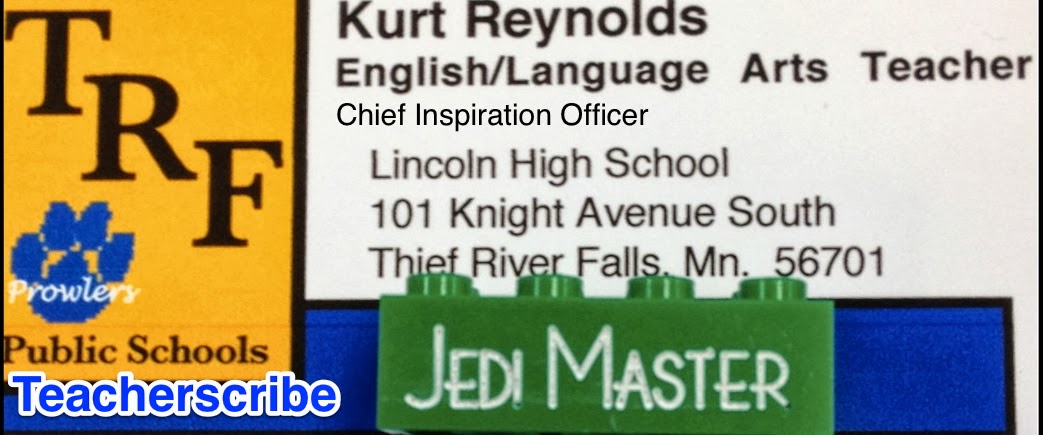
How We Got to Now by Steven Johnson is the second on my reading list for the summer.
Johnson is one of my favorite writers, and I've taught several of his books in class before, including Everything Bad is Good for You, Where Good Ideas Come From, and, most recently, The Ghost Map.
This book is exactly what the subtitle says - Six Innovations that Made the Modern World.
The innovations are glass, cold, sound, clean, time, and light.
What I enjoy about Johnson is how he employs what he calls "the long zoom" and "the adjacent possible."
The long zoom is when we (or in this case, researchers like Johnson) peer into the past (hence the long zoom lens) and see the beginnings of significant events that - ironically - the people involved in the events really have no idea how significant and important the events are going to be.
The adjacent possible is an idea from evolutionary biology that focuses on how life forms (or as Johnson uses it - ideas) build off of one another. That is why you can't really have an idea that is ever ahead of its time. Exact conditions have to be in place in order to for the conditions to be right for the ideas or innovations to come into being.
Take Youtube for example. This couldn't have existed in 2001. We still had slow internet speeds (dial up). It was impossible to watch a 10 minute video on dial up. So internet speeds had to improve before Youtube could come into existence. You also had to have a need for people to watch videos on their computers. Back in 2001 that was still what TV was for. Who watched a video on your computer? You also had to have advances in video recording in order to have Youtube. Sure, you could video tape something and sure you could even play it back on your TV. But there was no way yet to upload that to the internet and play it back on your computer. All of those little innovations had to come first before Youtube could exist. That's the adjacent possible. All of those little innovations and to be adjacent to one another before the innovation of Youtube was possible.
I'll break down one innovation in the amazing way that Johnson does -
Glass -
Before books and computers, the vast majority of people on earth were farsighted. They didn't need to read (even if they could read). So they could see things far away (to hunt and gather) and thus would struggle to see things up close (again, if they wouldn't have noticed since they didn't have to read). But when glass "lenses" were experimented with and used in monasteries (where the knowledge was kept as in literate monks, who were like our cloud computer storage systems of today, stored the world's knowledge in the few books that existed by transcribing them) monks quickly realized how helpful they were in that they had become nearsighted from reading and transcribing so much and not having to focus on much in the way of hunting and gathering. Thus, over centuries the reading glass industries were born.
But that isn't where the story of glass ends. There was also the concept of mirrors. Asia had metal mirrors long before Europeans had glass mirrors, but those were unreliable. Imagine living your entire life without ever seeing an accurate, real-life image of yourself? Mirrors, no doubt, changed how we saw ourselves as much as glasses changed how we saw the world around us.
Glass also lead to magnifying lenses so we could see the microscopic world as well as telescopes so we could see the solar system and eventually our galaxy and eventually the universe.
Glass also lead to fiberoptic cables, which is how we communicate instantly today as light is beamed through them.
What is so amazing about Johnson's research is how they follows all of these random (or seemingly random threads) that connect to important events and eventually lead to the modern world.
If you're look for both an academic and entertaining read, this is it.

No comments:
Post a Comment